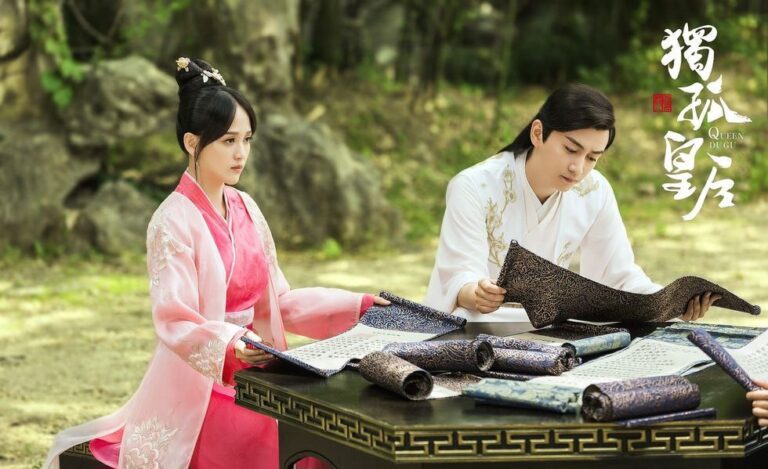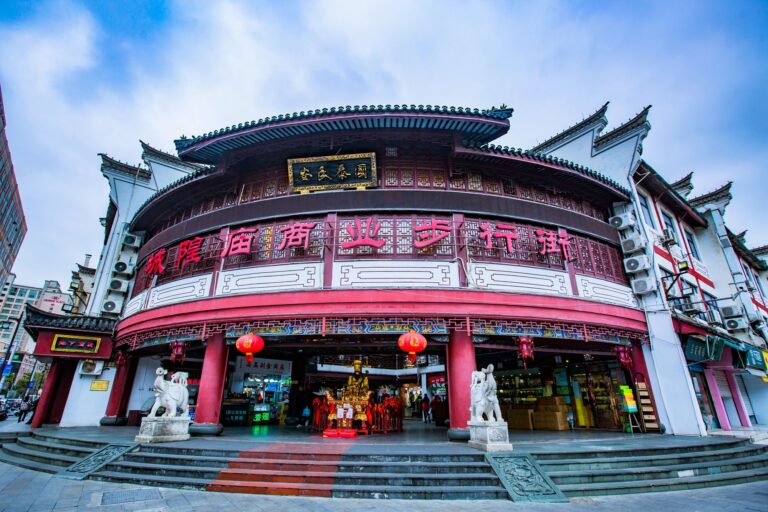
The colorful skirt culture of the Tang Dynasty
This spring, the traditional horse-faced skirt is very popular. Women who love beauty are wearing horse-faced skirts for outings to start their own Chinese romance. As a traditional Chinese women’s clothing, horse-faced skirts are said to have originated from the swirling skirts of the Song Dynasty. Others say that horse-faced skirts were commonly worn by aristocratic women in the Tang Dynasty. They were usually made of silk or other high-quality fabrics with bright colors. The pattern is exquisite.
In the developed and open era of the Tang Dynasty, Chang’an women’s skirt styles were quite bold, with novel styles and various fabrics. The skirt, which is wide, long and richly decorated, is one of the favorite clothes of Chang’an women.
In the early Tang Dynasty, tight-fitting and narrow clothing styles were once popular, and skirts were also popular in high-waisted, corseted, hip-hugging, and floor-length styles. In the prosperous Tang Dynasty, skirts gradually changed from narrow to wide; after the mid-Tang Dynasty, Skirts are getting wider and wider, looking exaggerated and luxurious. Because of the broadness of skirts, women at that time actually invented a way of feasting. According to the “Heritage of Kaiyuan Tianbao”: “The ladies of Chang’an went out for spring walks, and when they met famous flowers, they set up mats and flowers, and hung red skirts on top of each other as a banquet.” This record says that every March in Qujiang, a suburb of Chang’an, The garden is a good place for people to visit in spring, especially attracting women from high-ranking officials and nobles to come to enjoy the flowers and scenery. They dressed in gorgeous dresses and gathered together to have a banquet with tents, tableware, wine vessels and food.
When visiting the garden, they have to compete with each other to see who wears more precious and beautiful flowers. They compete to climb the willow ribbons with thousands of hands and insert thousands of flower branches. After having fun, they will choose a suitable place, insert bamboo poles around it, and then connect the skirts and hang them on the bamboo poles to form a tent for the banquet. The ladies held a banquet there, which was called a “skirt banquet” at the time. It was not until evening that they collected their skirts and left the table to return.
There were many kinds of skirt colors at that time, mostly red, purple, yellow and green. Among them, the red skirt dyed with pomegranate flowers was the most popular among women and was very popular. There are also those dyed crimson with madder, which is called “qian skirt”. Tang poet Li Qunyu’s poem “Huangling Temple” says: “The sedge in front of Huangling Temple springs, and Huangling’s daughter Qian’s skirt is new.” Because the red skirt is colorful and brilliant Such as pomegranate flowers, also known as “pomegranate skirt”.
In order to make their skirts bright and fragrant, women in Chang’an often dye their skirts with grass. Yellow skirts are skirts dyed with tulips. Zhang Mi of the Tang Dynasty recorded in “Zhuanglou Ji”: “Turlips are also fragrant grass. Women’s skirts are the most vivid when dyed. However, they cannot be burned by the sun, but when dyed, they have the flavor of tulips.” .” Concubine Yang liked to wear this kind of yellow skirt very much. “New Book of Tang·Five Elements” records that Concubine Yang often wore fake sideburns as jewelry and preferred to wear yellow skirts. People at that time said: “The righteous bun is thrown into the river, and the yellow skirt chases the current.”

In addition to single-color skirts, there are also multi-color skirts made of two or more colors of fabrics, with alternating colors, called “half-color skirts” or “half-color skirts”. This kind of multi-colored skirt is made of exquisite materials, which consumes a lot of work and materials, and is often regarded as a luxury dress. According to the “Old Book of Tang Dynasty: The Benji of Gaozong”: “The different colors of silk and brocade, as well as flower skirts, etc., are so extravagant that they harm the female workers. The Queen of Heaven, my rival, always wears seven-piece skirts.” Here. The “broken” in “broken” refers to the number of colored stripes in the second-color skirt. Qipao is a skirt made of seven-color damask and brocade. According to records, in the previous dynasty, Emperor Yang of the Sui Dynasty once “made long skirts, which were broken into twelve pieces and became famous as fairy skirts”. Therefore, in the Tang Dynasty, it was stipulated that half-color skirts were not allowed to exceed 12 ba, and mixed-color skirts were not allowed to exceed 6 ba.
At that time, in addition to the secondary colors, some embellishments were added to the skirts, such as embroidery, printing, painting, gold threads, beads, or jewel inlays, which were extremely gorgeous and luxurious. Because of the different decorations, the skirts have different names. Those with embroidery are called “embroidered skirts”; those with printing on the skirts are called “valerian skirts”; those with paintings on the skirts are called “painted skirts”.
Princess Anle is the daughter of Tang Zhongzong Li Xian, and her mother, Wei Shi, is known as the most beautiful woman in the Tang Dynasty. She was born when Li Xian was demoted to Luling by Wu Zetian. On the way to Fangzhou, Wei gave birth to her. Later, when Zhongzong Li Xian came to the throne, he doted on Princess Anle who had suffered with him. She was arrogant and favored, interfered in the government affairs, and even asked Zhongzong to make her the crown princess. She lived a luxurious life, her mansion and Buddhist monastery simulated palace confinement, and the craftsmanship was even more exquisite.
How can a princess who values material comfort like this not have luxurious dresses? She owns two dresses that are truly treasures. One is a single-silk green cage dress presented by Yizhou. The gold threads are flowers and birds, as thin as silk hair and as big as millet. It has eyes, nose, mouth and armor, which is magical and incredible. The other piece is the famous bird skirt. According to the “Old Tang Book·Five Elements Chronicles”: “(Princess Anle) had Shang Fang weave a woolen skirt with a hundred colors of bird feathers. It looks like one color when viewed from the front, the same color when viewed from the side, the same color in the day, and the same color in the shadow. Shape, and in the skirt.” This hundred-bird skirt is so radiant that it makes people confused and unaware of its true nature. This kind of skirt was later spread to the people, and officials imitated it one after another, becoming popular for a while. In order to weave bird skirts, people hunted birds to collect their feathers, and a large number of exotic birds in the mountains and forests were killed.
After Emperor Xuanzong of the Tang Dynasty came to the throne, in July of the second year of Kaiyuan (AD 714), he issued the “Edict on Prohibiting Luxury Use”, which ordered that the existing brocade clothes should be “dyed into soap”, and that pearls and jade could not be collected, and engraved utensils could not be made. For those who violate the beautiful bead rope, “a hundred sticks will be used, and the hired craftsmen will be demoted to the first class.” From then on, the trend of catching birds and beasts of various colors gradually subsided.
Among the women’s skirts in Chang’an, there is a kind of skirt called underskirt. At that time, women regarded plumpness and health as their beauty. The purpose of the underskirt was to perfectly reflect the plump curves of women. The underskirt is a kind of clothing that is connected to a waist-length super short top and a long skirt. The short underskirt is characterized by a large collar on the top and a high skirt waist, giving people a pretty and slender feeling, with a half-breasted area. Exposed to the outside, it highlights the plump beauty of women. From the Tang murals, we can see the graceful and graceful images of Tang women wearing blouses and long skirts.
There is also a multi-piece skirt, mostly made of six pieces of scarf, so there are “six-piece skirts” and “six-piece skirts”, and their width should be more than three meters. There are also seven, eight, or even twelve pictures, which shows how wide the skirts were at that time. At that time, women’s skirts were not only wide, but also lengthy, and it was especially fashionable to have skirts that trailed to the floor. It is very inconvenient to walk in such a fat and loose skirt. The poet Meng Haoran once wrote a poem: “When I sit, my belt lingers in the grass, and when I walk, my skirt sweeps away plum blossoms.”
In order to show the slenderness of the skirt, women in Chang’an will tie the waist of the skirt very high, often to the chest or armpits, and some skirts will expose the waist or half the breasts above the skirt waist. Although this kind of wide skirt is elegant and beautiful, it also has shortcomings, that is, it consumes materials and labor. When wearing it, you have to wear a wig on your head, comb your hair in a tall bun, and insert many gold hairpins, gold step shakes and other headdresses, so that you can match it. The coordination shows that the social fashion of luxury and extravagance was very popular at that time. The imperial court even intervened for a time and strictly controlled the width and length of women’s skirts: “A woman’s skirt should not exceed five pieces, and the floor-length skirt should not exceed three inches.”
During the reign of Emperor Wenzong of the Tang Dynasty, a princess was punished for wearing a skirt that was too large and oversized. According to the “Old Tang Book·Wen Zong Ji”, in the first month of the fourth year of Kaicheng’s reign (839 AD), when Wen Zong was watching lanterns in the Xiantai Hall, he saw Princess Yan’an walking in wearing a very large dress, which exceeded his own regulations. , was very angry and immediately dismissed her, and issued an edict to impose financial penalties on the consort Dou Huan, fined the consort Dou Huan two months’ salary.

Liu Yongjia, an editor of the Editorial Committee of the Integrated Media Center of Taierzhuang District, Zaozhuang City, Shandong Province, a media person, and a scholar of literature and history.
Source: Sina Finance

